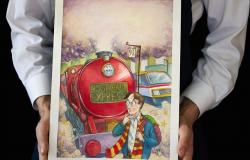
The image of the brilliant Austrian musician Wolfgang Amadeus Mozart has been serving as an attraction for a long time commercial claim so that more and more brands and companies of all kinds increase their turnover. Aside from the incessant drip of new editions of his musical works and the sales that each recording brings to performers and record companies, the face of the popular 18th century child prodigy and its name have become an effective lure that serves both to attract tourists to its native Salzburg such as to sell liquors, sausages, meatballs, beers, yogurts, mineral water, umbrellas or backpacks, to name a few examples from the immense catalog. mozartian. “Il catalogo è questo”, Leporello would have sung from his opera Don Giovanni.
Already in 2006, the year in which the 250th anniversary of the composer’s birth was commemorated, Arthur Oberascher, director of the office that promoted Austria’s image abroad at that time, assured that “Mozart was among the greatest brands in the world” and estimated the price of it in 5 billion euroswhich constituted a complete paradox if one takes into consideration the economic hardships that the musical genius who composed his first opera at the age of eight went through.
Johannes Chrysostomus Wolfgangus Theophilus Mozart (the name with which he was baptized), died at the age of 35 in Vienna on December 5, 1791. His widow, Constanze Weber, left the funeral preparations in the hands of Baron Gottfried van Swieten. The difficult economic situation of the family forced the burial to be of the third category, representing a cost of just over eight florins. The Salzburg composer would be buried modestly in a communal grave simple (not common) before a small group of attendees.
The widespread recognition of Mozart’s monumental musical work and his transcendental figure as a composer came years after his disappearance. Now, more than 200 years after his death, The name, image and work of the Austrian musician have not stopped gaining fame… and generating profits. His musical compositions, first on vinyl and cassette and later on CD and DVD, have been released year after year for the last few decades. In 2006, the Brilliant Classic record label commemorated the 250th anniversary of Mozart’s birth by putting on sale a complete edition of his work, composed of 170 CDs.
Today, with the platforms of streaming conditioning the way in which music is heard, the genius from Salzburg is among the most played classical musicians in Spotifywhere it has almost seven million listeners every month and is only surpassed by Bach and Beethoven. Furthermore, the operas Mozartian They are the most represented today throughout the world. According to data from Operabase.com, his work The magic Flute It was the one that enjoyed the greatest number of performances (1,346) in 2023. And not only that: Don Giovanni and The Marriage of Figaro, also his, were the fifth and sixth in that list of operatic performances. With these data, it is not surprising that Mozart is the author with the most operas performed (3,888), ahead of Giuseppe Verdi (3,760) and Giacomo Puccini (3,240).
Mozart’s long shadow has also reached the film market. The applauded film Amadeus (1984), from the director Milos Forman, winner of eight Oscars, came to relaunch the figure of the musical genius. Despite the film’s numerous licenses – among them, the theory that the Italian musician Antonio Salieri, overcome by envy, had poisoned Mozart-, Amadeus managed to awaken interest in the Austrian musician in the new generations by opening his music to a new market. Hundreds of thousands of young people from all over the world discovered the work of the Austrian composer and were moved by the scene in which he appeared sick in bed writing his Requiem shortly before he died, although it was an invention of Peter Schaffer, author of the work on which Milos Forman’s film was based. Also the poisoning hypothesis, based on an apocryphal theory, and reinforced by Russian writer Alexander Pushkin in his work Mozart and Salieribelonged entirely to the realm of speculation.
Amadeus was the most famous and successful among the numerous films based on the figure of Mozart, but it is in the literary field where Mozart’s work has seemed to emerge as an inexhaustible creative source. Just entering the 21st century, the limits had already been surpassed. 12,000 titles dedicated to or inspired in one way or another by the composer. And, since then, the number has only grown.
It was in 2006 when Salzburg was in charge of organizing all kinds of musical and cultural events to celebrate the 250th anniversary of the birth of the most famous of his children. All of this served not only as a tribute to his figure, but also as an effective tourist attraction. The number of visitors multiplied that year in the Austrian city, where many tourists came to visit the museum of composer’s birthplaceon Getreidegasse street, or the Mozart’s residence, located on Makartplatz. Today, tourists will continue to find in Salzburg a wide range of concerts and festivals around his figure and will also be able to enjoy the so-called Mozart Dinner Concerts (Mozart dinner-concert), where diners taste typical Austrian dishes while listening to some of his most famous compositions performed by period-dressed musicians in a restaurant.
Thus, taking advantage of the growing trend, a considerable commercial offer has been maintained in the streets of Salzburg in recent decades in the form of establishments where it is possible to find all types of products that use the image and name of the musician. Among all of them, the famous ones stand out Mozartkugelnsome spherical chocolate bonbons whose first version dates back to 1891 and whose creator was Paul Fürst, a master pastry chef living in Salzburg. Fürst presented his recipe in Paris in 1905 at a world fair, where he was awarded a gold medal.
Given the success of that sweet composed of marzipan, nougat and pistachio covered in chocolate, It didn’t take long for Fürst to have competitors. Over the years, formats and manufacturers have multiplied and in parallel have disputes over rights and commercial names. Large companies have been joining the chocolate business. Austria tried unsuccessfully to prevent manufacturers from other countries from appropriating the product. To make matters worse, in 2012, the Austrian justice lifted the ban on using Mozart’s name in these traditional sweets for all manufacturers without exception and more brands jumped on the bandwagon. The German company Reber currently distributes 80 million of these chocolates every year. And it is precisely in Germany where 80% of these sweets are consumed, which are already exported to more than 40 countries.
He Mozart chocolate liqueur It is another of the most recognized products that use the image and name of the author of the Jupiter Symphony. The drink uses cocoa, sugar beet and Bourbon vanilla as ingredients as a base to create a product that enjoys recognized international prestige. The Mozart distillery, which has been based in Salzburg for more than 60 years, was named Spirits producer of the year at the IWSC, a prestigious international wine and spirits competition.
In the front of the supermarket inspired by Mozart you can also find yogurts, salamis, cakes, a beer and even a violin-shaped sausage. The image of the musician, turned into a kind of goose that lays golden eggs, has become visible on umbrellas, letter openers, notebooks, diaries, plates, ashtrays, handkerchiefs, baby bottles, t-shirts, sweatshirts, rubber ducks and teddy bears. Even Playmobil launched one click Mozart with its powdered wig included.
The face of the musician who composed more than 40 symphonies and more than 20 operas has also been put on the obverse of a euro coin minted in Austria, which may allow the paradox of paying for any product with the image of Mozart with a coin that includes the face of… Mozart. Something similar to that of “money calls money”, although, to be more exact we would have to say “Mozart calls Mozart”.
The eyes of the most famous musician of Classicism can observe us from a postage stamp and from many other philatelic documents. We can sleep on a Mozart mattress, spend the night in a Mozart Hotel, learn to drive at a Mozart driving school or open a Mozart tap at home. The Mozartmania has escaped from the pentagrams to become a successful brand or a company that is not exactly anonymous and much less limited.
Set to discover ways of squeeze the name of the great musician, we must recognize a certain originality to the theory, brilliantly monetized through records, books, conferences and more, which is known as the Mozart Effect, according to which listening to the music that the Austrian composed produces beneficial effects on health. Several scientific studies have been published that associate listening to Mozart’s music with greater academic performance, with improvement in spatial recognition and with increased intelligence in children, but there are also trials and research to the contrary.
True or false, what is undeniable today is that many millions of people around the world own an item by the famous Austrian composer. It could be a record, a book, a poster or a chocolate. Or maybe one of the busts with his image that now continue to sell for thousands in dozens of stores on-lineincluding the large Chinese distributors (Temu and Aliexpress), which shows that the fascination with the figure of Mozart, never better said, is still fully valid.





